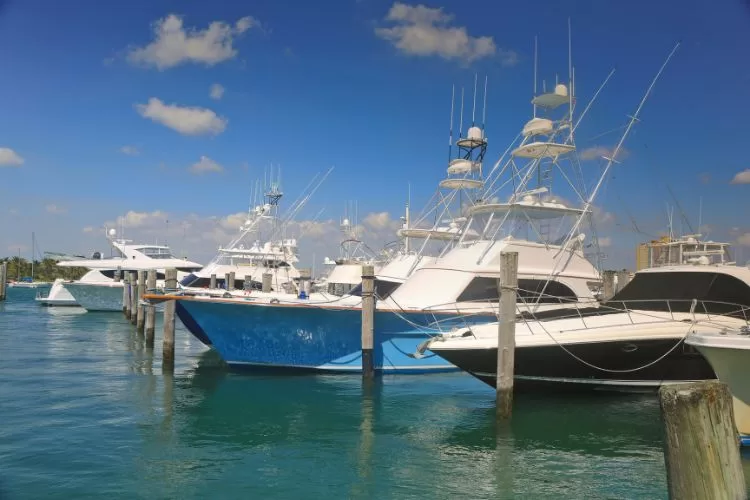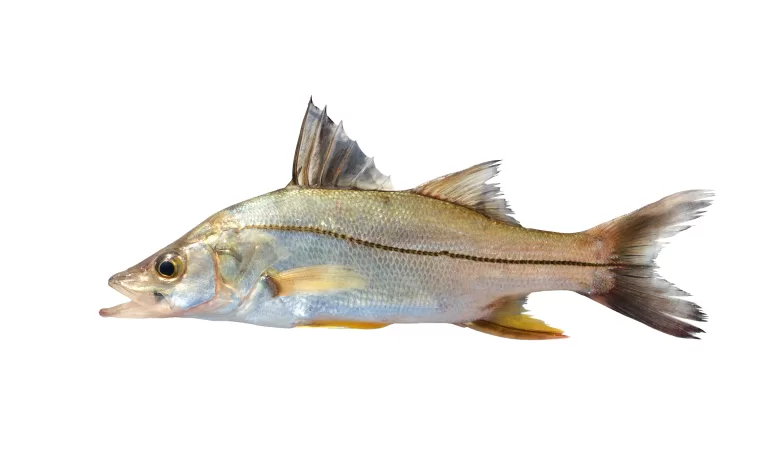Amberjack Fishing Guide | How to Catch Amberjack fish in Florida
A Guide to Amberjack Fishing in Florida
Amberjack fishing in Florida isn’t for the faint of heart. These powerful, big game fish are a challenge to catch. With their weight reaching up to 140 lbs, they can actually test the limits of your fishing gear.
Mainly Amberjacks, AKA reef donkeys, roam the warmer currents of the Atlantic Ocean and Gulf of Mexico. Therefore, they’re among the most popular catches for anglers along Florida’s coastline. While they can live in many regions, Amberjacks prefer swimming near wrecks, reefs, and other underwater structures such as reef balls or artificial reefs.
In this article, we’ll go through everything you need about Amberjack fishing, from identifying the Greater Amberjack to catching it. So, keep reading and learn how to fish Amberjack.
Key Takeaways
- There are various species of Amberjack, like Greater Amberjack, Yellowtail Amberjack, Lesser Amberjack, and Banded Rudderfish. Greater Amberjacks are identified by their large size and distinctive amber line.
- Target offshore structures for Amberjack fishing. Using heavy-duty reels, rods, and tackle. Techniques such as trolling, bottom fishing, and jigging are most commonly used for Amberjack fishing.
- Reeling time varies based on factors like size and gear. Follow regulations from the Florida Fish and Wildlife Conservation Commission for responsible fishing.
What Kind of Fish Is an Amberjack?
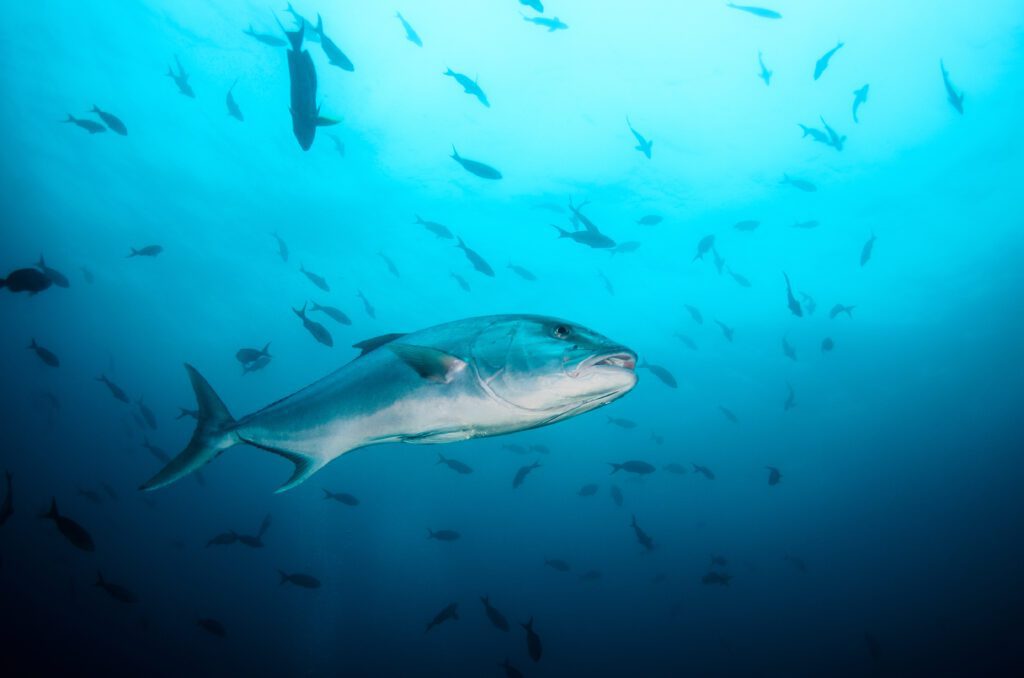
Many fish species fall under the Amberjack category, all of which belong to the Carangidae family. They’re known to be fast and powerful, making them popular among sport fishermen.
Some of the most common of those species are:
- The Greater Amberjack (Seriola dumerili)
- The Yellowtail Amberjack (Seriola lalandi)
- The Lesser Amberjack (Seriola fasciata)
- Banded Rudderfish (Seriola zonata)
How To Identify Greater Amberjack
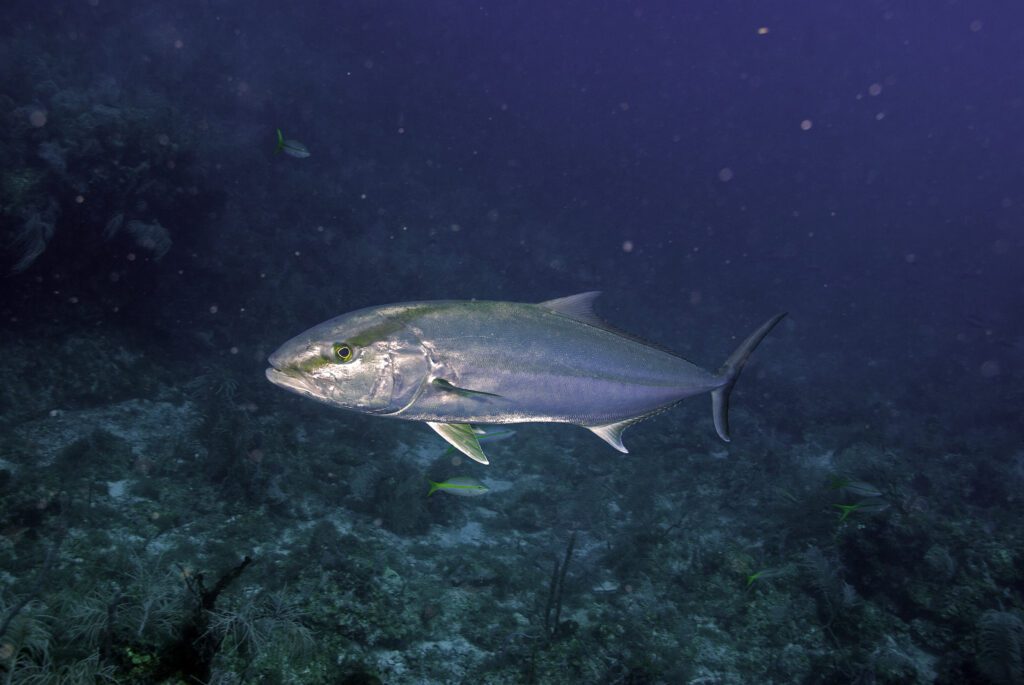
Greater Amberjacks (Reef Donkeys) are the largest Amberjack species. An average fish can weigh about 40 lbs, while big Amberjack can surpass the 200 lbs mark!
These fish have elongated streamlined bodies and large heads. Moreover, the coloration of their backs ranges from dark bluish-black to olive green with a black dorsal fin. Yet, their most distinctive feature is the amber line running across their sides.
How To Catch Amberjack
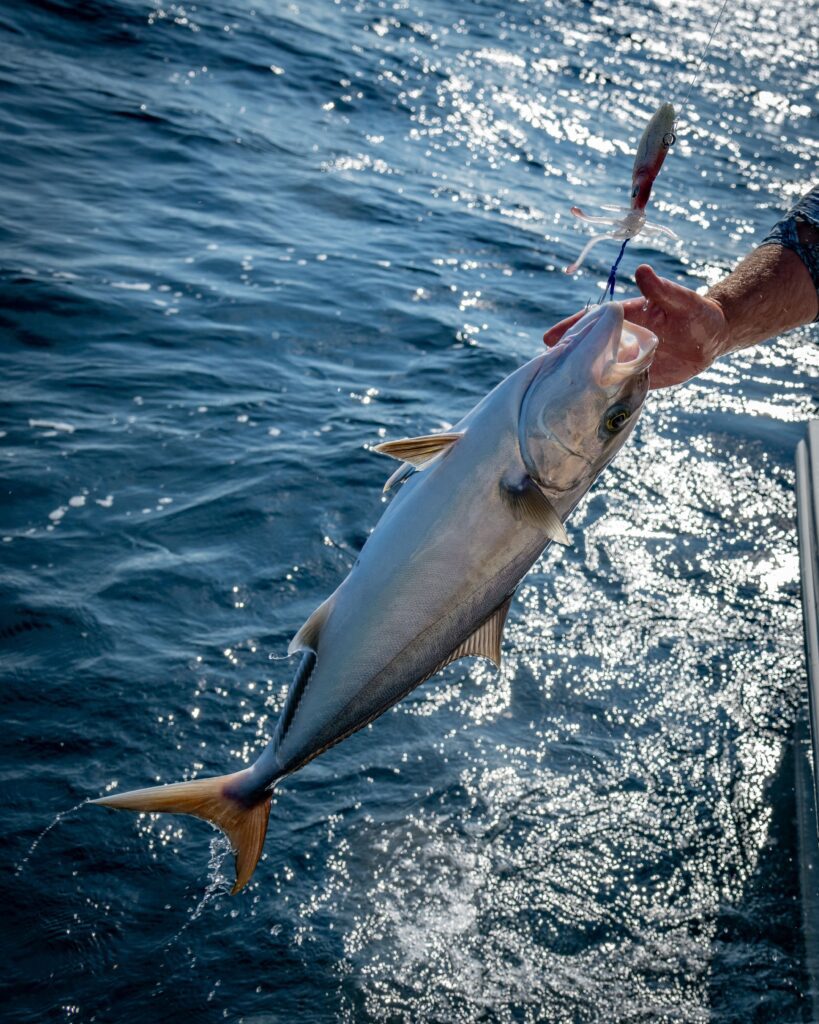
As it can be a tough task, catching amberjack requires careful planning combined with the right techniques. Below is a guide on how to catch such a gorgeous fish, whether the Greater Amberjack or other species.
1. Location
Because of their nature, catching Amberjacks requires targeting locations with offshore structures, such as reefs, wrecks, or oil rigs. This means anywhere along the coastline of Florida can be a suitable location.
Usually, Amberjacks remain within an average depth of 60 feet in the water column. So, that’s where they’ll probably be. In all cases, considering using a fishfinder can be a fantastic idea in this situation.
2. Equipment, Bait, and Lures
Choosing the right equipment is also vital for catching Amberjacks. Amberjack tackle primarily consists of:
- A heavy-duty rod and reel with a high line capacity to handle the powerful tugging.
- A braided line to withstand the force of the Amberjack’s counter pull (with a test strength ranging from 50 to 100 lbs).
- A sturdy leader made of heavy fluorocarbon or steel wire to prevent the fish’s sharp teeth from cutting the line (in the range of 80 to 100 lbs). Leaders should typically be about six feet long.
- Durable hooks, preferably circle hooks, to reduce the risk of gut-hooking the fish (hook sizes vary depending on the bait used).
- The best live Amberjack baits are, blue runners, cigar minnows, or threadfin herring.
- Artificial lures like jigs, poppers, and plugs (they prove successful, particularly near the surface of the water).
- Swivels and snap connectors to prevent line twists.
- Appropriate weights, depending on the fishing technique used.
3. Techniques
Combining a number of fishing techniques can elevate your chances of success. Yet, it’s essential to understand the depth at which Amberjacks are holding. For each depth, you’ll need a particular technique, including:
- Trolling: It’s a decent method to try (if you’re in the correct location), especially when Amberjacks are feeding near the surface. However, consider opting for other techniques when the fish are deep in the water.
- Bottom Fishing: It’s a more commonly used technique for deep-sea fishing. It involves using weighted rigging to keep the lure (or bait) deep under the water in one place (plunking) or moving along the bottom (drift fishing).
- Jigging: This technique works best when the fish are holding at mid-water. It involves a sudden lifting motion to mimic the movement of a struggling bait fish.
How Long Does It Take to Reel in an Amberjack?
Several factors can affect the time it takes to reel in an Amberjack. This includes the size and strength of the fish. It also depends on the angler’s experience and the gear used.
In general, smaller Amberjacks take about 10 to 20 minutes to reel in. On the other hand, larger sizes can fight for over 30 minutes. In all cases, using heavy-duty fishing equipment can help reduce that time. If you are a rookie you can expect to hang over the bow of your boat for a good while, and will feel like you just deadlifted for 30 minutes! Another name for these fish is the Back Breaker!
4. Fishing Rigs
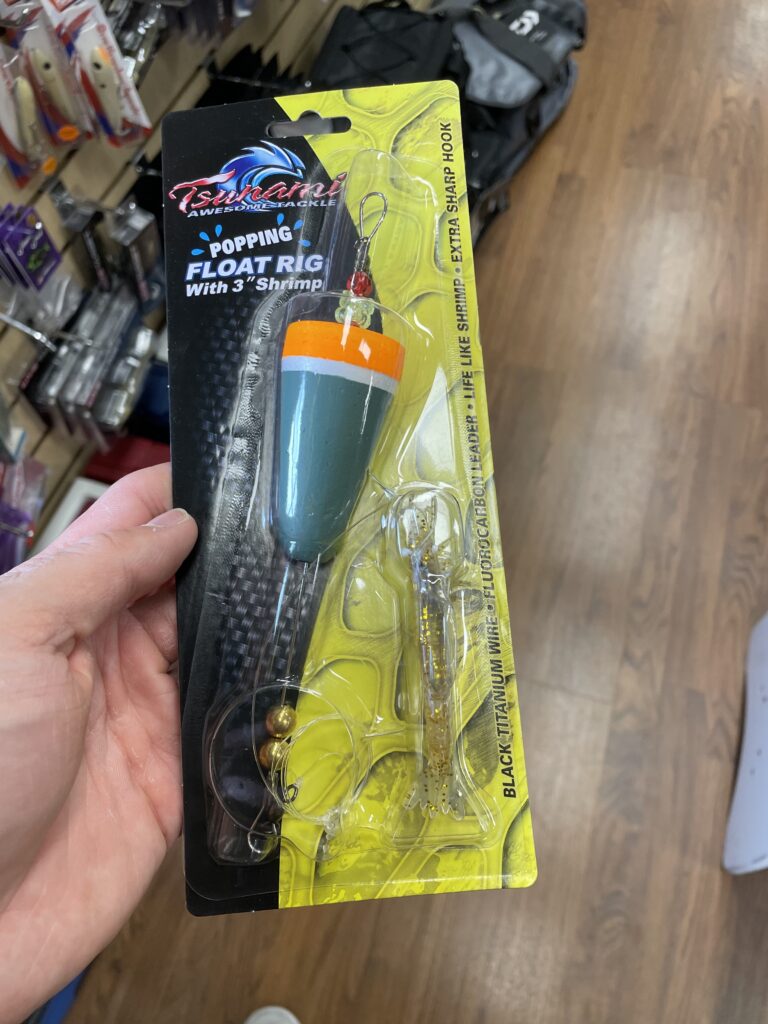
There are many types of rigs designed to handle the strength of Amberjacks. The most common of them are:
- Live Bait Rigs: This type utilizes live bait fish that swim freely to entice the attention of hungry Amberjacks. With the use of a sturdy hook attached to a wire leader, it becomes difficult for a bite-off to occur.
- Popping Cork Rig: Combining a popping cork with live or artificial bait, this rig is useful for attracting Amberjacks that are near the surface.
- Carolina Rig: This versatile type of rig features a sliding egg sinker, leader, swivel, and hook. It works best for bottom fishing, allowing the bait to move naturally with the current.
5. Timing
The time when you go fishing for Amberjacks is also a considerable matter. These fish are mostly active during the warmer months of the year (February to June).
Greater Amberjack Fishing in Florida
Wherever you decide to go along the coast of Florida, you’ll definitely find an Amberjack fishing spot. It’s an easy-to-find type of fish because of the extensive amount of offshore reefs in this location.
In all cases, for a Greater Amberjack to be considered a game fish, it has to be 34 inches or over in length. As for other species, being as small as 14 inches is acceptable.
On top of that, there’s a daily bag limit of one fish per person. Alternatively for other species, the limit is five, whether it’s smaller Amberjacks or Banded Rudderfish.
In all cases, harvesting Amberjacks falls under the regulations of the Florida Fish and Wildlife Conservation Commission. Thus, it’s essential to check for the latest update of rules.
Conclusion
Amberjack fishing in Florida requires a combination of skill, the right gear, and an understanding of the fish’s nature. Whether you’re after the Greater Amberjack or other smaller species, employing suitable techniques is what you need to do.
All in all, remember to check for the latest regulations from the Florida Fish and Wildlife Conservation Commission. This way, you ensure a responsible and sustainable fishing experience along the coastline of the beautiful Sunshine State.


